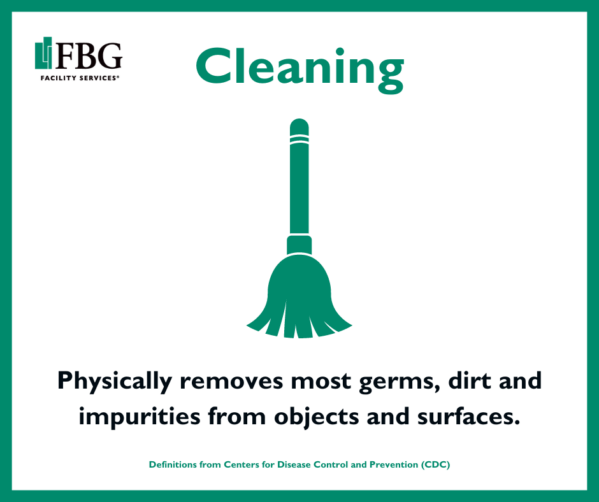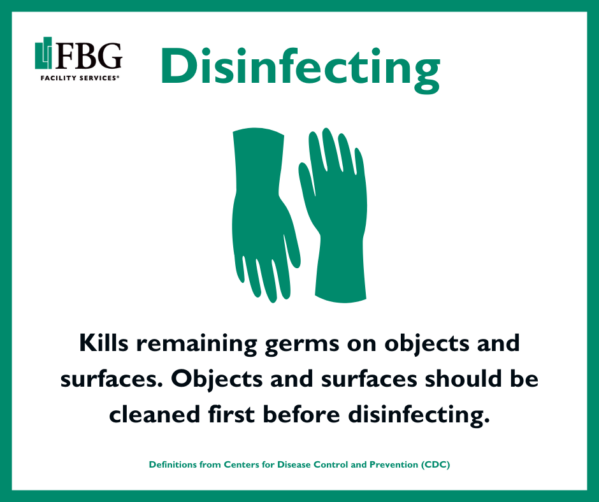Cleaning vs. Sanitizing vs. Disinfecting – What’s the Difference?
Maintaining a clean and hygienic environment is essential for our health and well-being, especially in today’s world. But what exactly do we mean when we talk about cleaning, sanitizing and disinfecting? These three terms often get used interchangeably, yet they each serve distinct purposes in the fight against germs and cleanliness. Let’s take a closer look at the differences between cleaning, sanitizing and disinfecting, and why each step is crucial in keeping our spaces safe and healthy.
Cleaning
Think of cleaning as the first step in any hygiene regimen. Cleaning essentially means physically removing germs, dirt and impurities from objects and surfaces.
Using soap, detergent, water and elbow grease can dislodge dirt and grime that may harbor bacteria and viruses. However, it’s important to note that while cleaning is effective at removing a large portion of germs, it may not eliminate all pathogens entirely. Just because something looks clean, doesn’t mean it completely is.

Sanitizing
After cleaning, the next step is often sanitizing. Sanitizing is all about reducing the number of germs on surfaces to levels deemed safe by public health standards. This process targets the remaining bacteria and viruses that cleaning might have missed.
Sanitizing can be achieved through various methods, including chemical sanitizers, heat or steam. However, it’s crucial to remember that sanitizing is most effective when preceded by thorough cleaning. Cleaning prepares the surface by removing debris, allowing the sanitizer to make direct contact with the germs.

Disinfecting
While cleaning and sanitizing make significant strides in reducing germs, there’s still a need for a final, more potent step: disinfecting. Disinfecting goes beyond simply reducing the number of germs—it aims to kill the remaining pathogens on surfaces and objects, minimizing the risk of infection or disease transmission.
Disinfectants come in various forms, such as wipes, sprays or solutions, and contain chemicals specifically designed to destroy bacteria, viruses and fungi. Like sanitizing, disinfecting is most effective when preceded by thorough cleaning to ensure that the disinfectant can reach and act upon all areas of the surface.
Related: Infection Prevention and Control: FBG’s Commitment to Health and Safety

In the battle against germs and infectious diseases, understanding the distinctions between cleaning, sanitizing and disinfecting is crucial. While cleaning removes dirt and a significant portion of germs, sanitizing and disinfecting take the process a step further by reducing and killing harmful bacteria.
Remember, proper hygiene protocols often involve all three steps in sequence: cleaning to remove debris, sanitizing to reduce germs and disinfecting to kill remaining pathogens. By incorporating these practices into our cleaning routines, we can create safer and healthier environments for ourselves and those around us.
Definitions from Centers for Disease Control and Prevention (CDC).